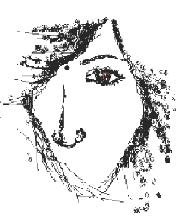 Plaque with the goddess Durga and attendants,
Plaque with the goddess Durga and attendants, Shunga period (ca. 2nd–1st century B.C.),
1st century B.C.Chandraketugarh,
West Bengal, IndiaTerracotta;
This plaque is one of the largest and most important early Indian molded terracottas known. The identity of the main figure, the principal subject of a number of such early Indian plaques, is uncertain. She may be an early depiction of the goddess Durga, who was not thought to be represented prior to the third century. After this date Durga is usually shown, in a narrative format, as the slayer of the buffalo demon Mahisha, her multiple hands holding a bevy of weapons. Here, she displays a more pacific mien, her arsenal stuck into her coiffure like hairpins. The Museum's plaque shows the goddess with female attendants and male(?) supplicants within a shrine(?). Two columns with lotus capitals bearing atlantid figures, most probably yakshas (male deities associated with the earth's bounty), support the roof. Durga stands with left hand on hip, right hand in a boon-bestowing gesture pointing to a bowl held by a supplicant. Aside from her militant aspect, Durga is also associated with prosperity and in later plaques, coins fall from her hand. Female attendants shield her with a parasol, hold fans of peacock feathers(?), and support a large standard(?). The head of a kneeling supplicant is seen at the right. The function of these plaques is unknown. They may have been offerings or icons for personal devotion.



No comments:
Post a Comment